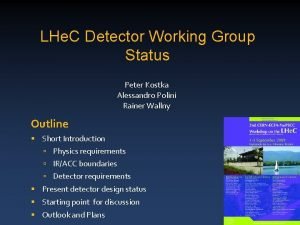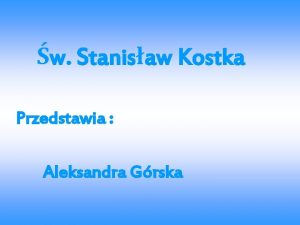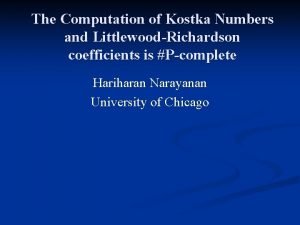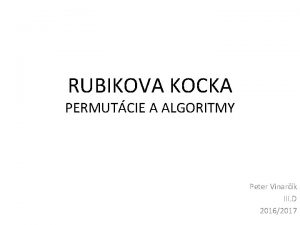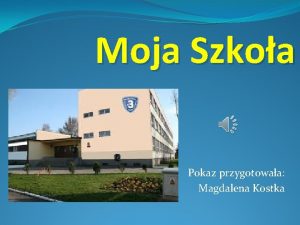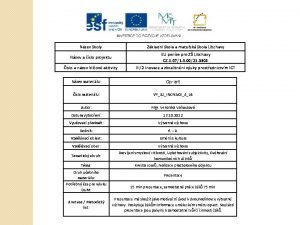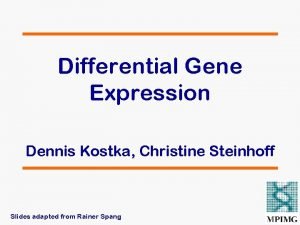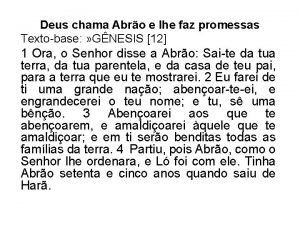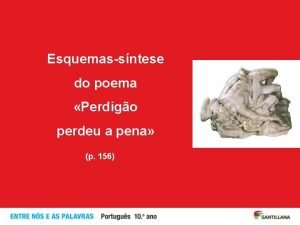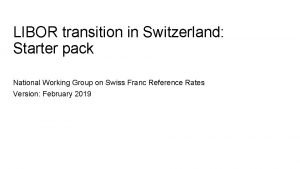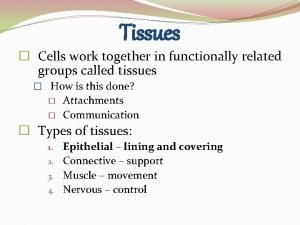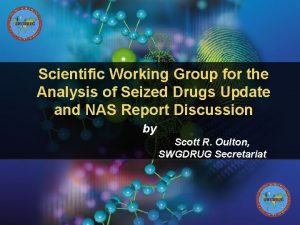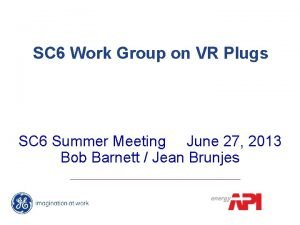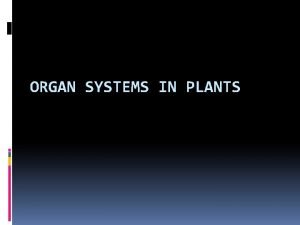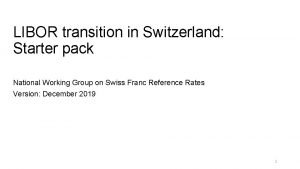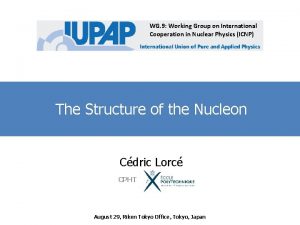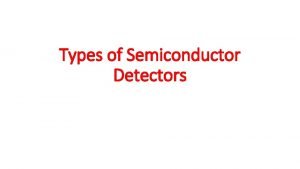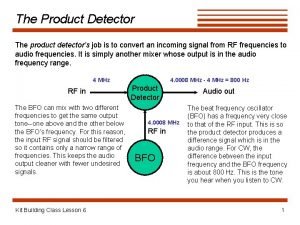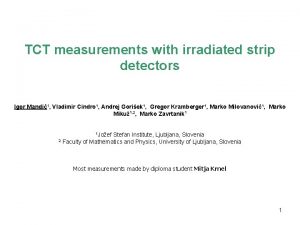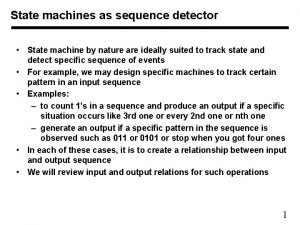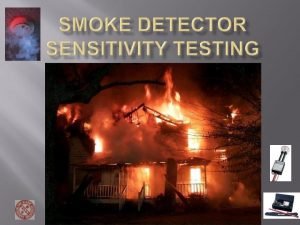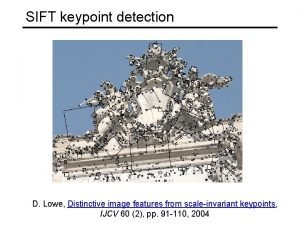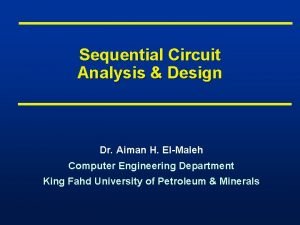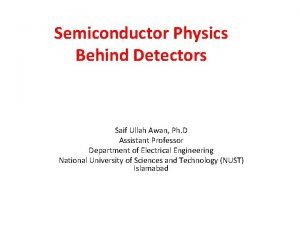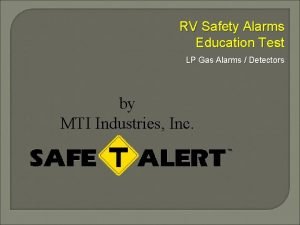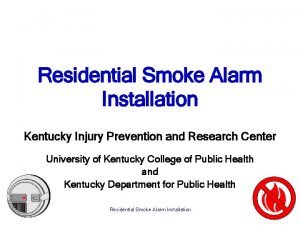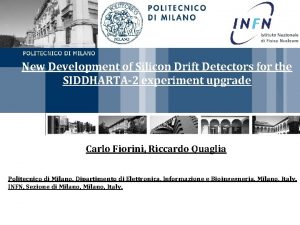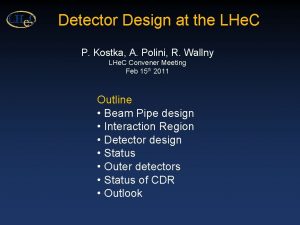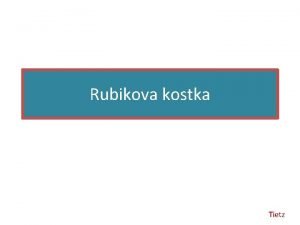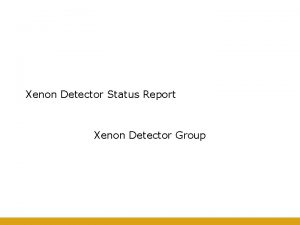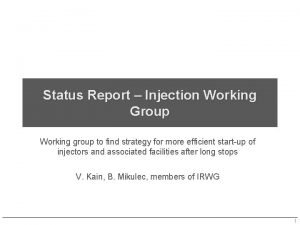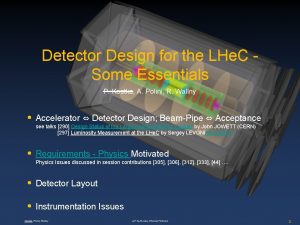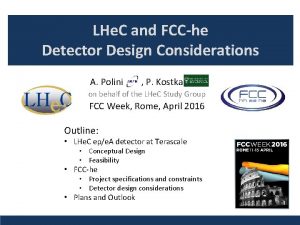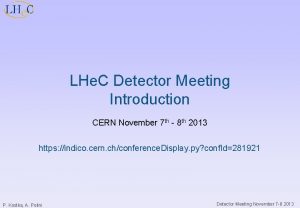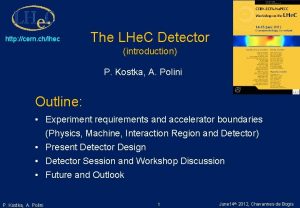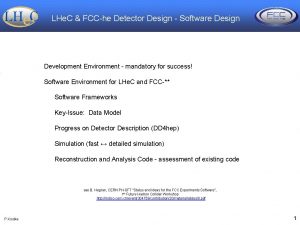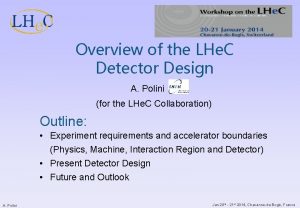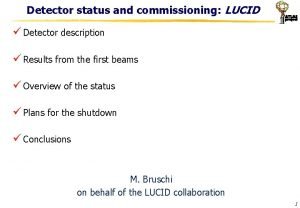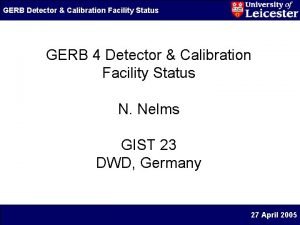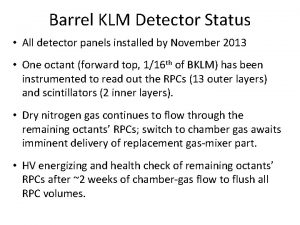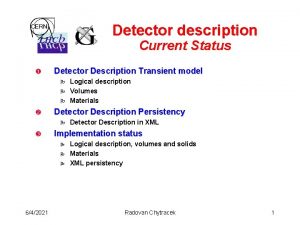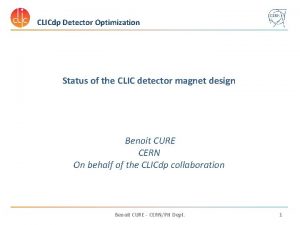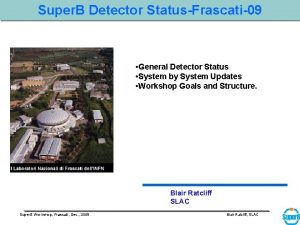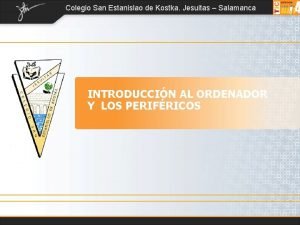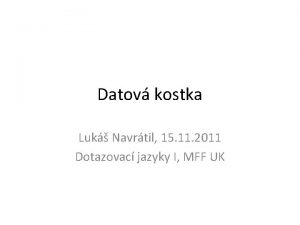LHe C Detector Working Group Status Peter Kostka

















![2 -Detector Low. Q Radius [cm] Elliptical pixel detector: 2. 9– 4. 6/3. 47 2 -Detector Low. Q Radius [cm] Elliptical pixel detector: 2. 9– 4. 6/3. 47](https://slidetodoc.com/presentation_image_h/14d0591a8a832ea2281206532034752d/image-18.jpg)
![2 -Detector Low. Q Radius [cm] Elliptical pixel detector: 2. 9– 4. 6/3. 47 2 -Detector Low. Q Radius [cm] Elliptical pixel detector: 2. 9– 4. 6/3. 47](https://slidetodoc.com/presentation_image_h/14d0591a8a832ea2281206532034752d/image-19.jpg)
![2 -Detector Low. Q Radius [cm] Elliptical pixel detector: 2. 9– 4. 6/3. 47 2 -Detector Low. Q Radius [cm] Elliptical pixel detector: 2. 9– 4. 6/3. 47](https://slidetodoc.com/presentation_image_h/14d0591a8a832ea2281206532034752d/image-20.jpg)
![2 -Detector Low. Q Radius [cm] Elliptical pixel detector: 2. 9– 4. 6/3. 47 2 -Detector Low. Q Radius [cm] Elliptical pixel detector: 2. 9– 4. 6/3. 47](https://slidetodoc.com/presentation_image_h/14d0591a8a832ea2281206532034752d/image-21.jpg)
![2 -Detector Low. Q Radius [cm] Elliptical pixel detector: 2. 9– 4. 6/3. 47 2 -Detector Low. Q Radius [cm] Elliptical pixel detector: 2. 9– 4. 6/3. 47](https://slidetodoc.com/presentation_image_h/14d0591a8a832ea2281206532034752d/image-22.jpg)
![Low. Q 2 -Detector Radius [cm] Elliptical pixel detector: 2. 9– 4. 6/3. 47 Low. Q 2 -Detector Radius [cm] Elliptical pixel detector: 2. 9– 4. 6/3. 47](https://slidetodoc.com/presentation_image_h/14d0591a8a832ea2281206532034752d/image-23.jpg)
![2 -Detector Low. Q Radius [cm] Elliptical pixel detector: 2. 9– 4. 6/3. 47 2 -Detector Low. Q Radius [cm] Elliptical pixel detector: 2. 9– 4. 6/3. 47](https://slidetodoc.com/presentation_image_h/14d0591a8a832ea2281206532034752d/image-24.jpg)
































- Slides: 56

LHe. C Detector Working Group Status Peter Kostka Alessandro Polini Rainer Wallny Outline § Short Introduction ú Physics requirements ú IR/ACC boundaries ú Detector requirements § Present detector design status § Starting point for discussion § Outlook and Plans

LHe. C Kinematics • High x and high Q 2: few Te. V HFS scattered forward: Need forward calorimeter of few Te. V energy range down to 10 o and below █. Mandatory for charged currents where the outgoing electron is missing. Strong variations of cross section at high x demand hadronic energy calibration as good as 1% • Scattered electron: need very bwd angle acceptance for accessing the low Q 2 and high y region █. Kostka, Polini, Wallny 1 st September 2009 2

Detector Acceptance CHARM 70 Ge. Velectronx x 7 Te. V 7 Te. V proton DIFF 70 Ge. V proton RAPGAP-3. 2 (H. Jung et. al. - http: //www. desy. de/~jung/rapgap. html) Hz. Too. L-4. 2 (H. Jung et. al. - http: //projects. hepforge. org/hztool/) selection: q 2. gt. 5. DIFF 1° 70 Ge. V electron x 7 Te. V proton 10° 1° NRAD 70 Ge. V electron x 7 Te. V proton 10° Jet Energy [Ge. V] 1° Highest acceptance - if possible 10° Jet Energy [Ge. V] Kostka, Polini, Wallny 1 st September 2008 3

Requirements from Physics § High resolution tracking system ú excellent primary vertex resolution ú resolution of secondary vertices down to small angles in forward direction for high x heavy flavour physics and searches ú precise pt measurement matching to calorimeter signals, calibrated and aligned to 1 mrad accuracy § The calorimeters - Energy flow ú electron energy to about 10%/ E calibrated using the kinematic peak and double angle method, to permille level Tagging of 's and backward scattered electrons - precise measurement of luminosity and photo-production physics ú hadronic part 30%/ E calibrated with p. Te /p. Th to 1% accuracy Tagging of forward scattered proton, neutron and deuteron - diffractive and deuteron physics § Muon system, very forward detectors, luminosity measurements

Beam Optics and Detector Acceptance From IR WG: 0 10 two options discussed at the moment: 10 10° 1° IP Current design: strong-focusing magnets at 120 cm from IP Could think of two detector options Low Lumi, Low x high acceptance detector 10 High Lumi, High Q 2 Main detector 100 aperture • • Kostka, Polini, Wallny 1 st September 2009

Accelerator / Interaction Region • • Lumi range: 1032 - 5 · 1033 cm-2 s-1 Beam spot: ~ 10 x 25 m 2 - same for e±·nucleon - stability? Center of mass energy range: s · 0. 5 - 2 Te. V Beam Pipe: Recent review: (R. Veness, “Mechanical constraints”, CERN, LEB 5 III 09): • Resistive wall beam heating: “Resistive wall impedance scales with 1/r 3, so decreasing the beam pipe radius • • from 29 mm (LHC) to 25 mm (SLHC) would increase heat load by 56%” Collimation, machine protection, background (Synchrotron Radiation Fan) As soon as a provisional geometry for the beam pipe is available, we must feed this back to the relevant experts for analysis Kostka, Polini, Wallny 1 st September 2009 6

Beam Pipe Considerations Pipe dimensions – very essential choice: to large extent it determines the Strong implications in terms of costs and acceptance Track Angle [°] size of the detector. Distance Detector-Beam-Line d [cm] d = 6. 0 d = 5. 0 d = 4. 0 d = 3. 0 d = 2. 0 z-Distance to Vertex [cm] Present design: elliptical Be beam pipe from SLHC for now: ry=2. 50 cm (radius of SLHC design) and rx=3. 07 cm (scaled from HERA experience) Dedicate simulation of Interaction region needed (synchr. background) Kostka, Polini, Wallny 1 st September 2009 7

Infrastructure ALICE § Round access shaft of 23 m diameter, cavern about 50 m along the beamline LHCb § Shaft: 100 m depth, 10. 10 m diameter, very slightly non vertical; experiment: length 19. 90 m from IP, max width at the muon station 12 m; cavern: 50 m x 20 m Point 2 (Alice) Point 8 (LHCb)

Boundary Conditions Summary Modular Experiment Set Up • Given the time constraints - CMS-type logistics to be considered? • Assembling in surface level hall (building(s) sufficient? ) • ~5 years before real installation in or near to the beam line - start of assembling • 2 -3 years for installation, tests Two detector options (w/out and with strong-focusing magnets at 120 cm from the IP) • • high-Q 2 / high-luminosity / ”low” acceptance ( e > 10º, h <170º) • low-x / low-luminosity / ”high” acceptance ( e > 1º, h<179º) Other options available? (discussion with ACC/IR) Asymmetric design of optics and interaction region feasible? Maximize acceptance in the forward region at High Q 2?

Detector Requirements (I) • Tracking • • • lowest mass tracker - essential for /e± ident (specifically bwd) early 0 ident - vertex detector/trigger TPC - economical coverage of a large volume with essentially continuous tracking, low material budget - high quality detector performance, d. E/dx particle identification and good V 0 recognition. TPC near the beam line - TPC background tolerant / BG tolerable? outer radii only? high resolution track definition in front of forward calo tracking trigger in front of fwd/bwd calo, pt trigger there too? Kostka, Polini, Wallny 1 st September 2009 10

Precision Tracking: Si-Gas Tracker – GOSSIP Gas on Slimmed Silicon Pixels (see talk of H. Van De Graaf) • • • Gas for charge creation, Si-pixel/strips/pads for signal collection Lightweight detector More than one hit per track - defines track segments Si radiation hard - standard CMOS ( 90 nm process ) Trigger capable: 25 ns, Gossipo 3|4 readout chip ~O(1) ns time resolution. Large volume detector affordable, industrial production Time measurement - digital TPC R/O system Gas choice: radiator : Transition Radiation Tracker - e/ identification Diffusion and drift velocity limits position measurement currently to ~<<20μm • If needed innermost layer possibly still with pixel Kostka, Polini, Wallny 1 st September 2009 11

Detector Requirements (II) Calorimeter • • • Minimize longitudinal and lateral energy leakage Fwd/bwd Particle Flow Detector to achieve desired mass resolution/ /e± / 0 /. . . This technique combines the tracking/calorimetry information in an optimal way in order to get the best possible jet-energy resolution. Both electromagnetic and hadron calorimetry inside the solenoid coil; minimum material inside ECal; (the effective granularity is increased by moving the calorimeter further from the IP - the right effect in our context) Magnetic Field • 3. 5 Tesla solenoidal field Kostka, Polini, Wallny 1 st September 2009 12

Calorimeter Technologies Particle Flow and high granularity devices: • promising at ILC energies(ECMS<500 Ge. V) • need a transition to “normal” calorimetry if to be used at higher energies • Rely heavily on software, microelectronics and Si. PM (or Gas chambers ? ) Dual Readout: Attractive idea: reading independently (in a non-compensating cal. ) 1) a Cerenkov response only sensitive to relativistic shower components (mostly e ±) 2) a Scintillation response sensitive to all d. E/dx and correcting event by event and cell by cell the main (scintillation) response. • Usable up to highest energies • Require hardware developments, some of them still at the “generic” level. • Need to be demonstrated with large prototypes (DREAM Collaboration) Conventional technologies: • LAr (ATLAS, H 1) especially in in barrel/rear region. Possibly problematic for infrastructure and modularity boundaries

Particle Flow (see talk C. Grefe) • • Use the best energy information available for each particle in a jet • Tracker information for charged hadrons and low to mid-energy electrons • ECAL information for photons and high-energy electrons • HCAL information for long-lived neutral hadrons Pointing geometry - minimizing transversal and longitudinal Energy leakage High granularity to allow geometrical separation of particles PFA calorimetric performance = HARDWARE + SOFTWARE Pixels too large, ± 1 shower Pixels small enough 2 showers K° F. Simon - MPI Munich LHe. C Divonne 2008 tracker information Kostka, Polini, Wallny 3 rd September 2008

And here it is …

… the detector

… the detector … a very first draft
![2 Detector Low Q Radius cm Elliptical pixel detector 2 9 4 63 47 2 -Detector Low. Q Radius [cm] Elliptical pixel detector: 2. 9– 4. 6/3. 47](https://slidetodoc.com/presentation_image_h/14d0591a8a832ea2281206532034752d/image-18.jpg)
2 -Detector Low. Q Radius [cm] Elliptical pixel detector: 2. 9– 4. 6/3. 47 -6. 05 Kostka, Polini, Wallny 1 st September 2009
![2 Detector Low Q Radius cm Elliptical pixel detector 2 9 4 63 47 2 -Detector Low. Q Radius [cm] Elliptical pixel detector: 2. 9– 4. 6/3. 47](https://slidetodoc.com/presentation_image_h/14d0591a8a832ea2281206532034752d/image-19.jpg)
2 -Detector Low. Q Radius [cm] Elliptical pixel detector: 2. 9– 4. 6/3. 47 -6. 05 Barrel layer 1 -5: 7. 5– 61 Kostka, Polini, Wallny 1 st September 2009
![2 Detector Low Q Radius cm Elliptical pixel detector 2 9 4 63 47 2 -Detector Low. Q Radius [cm] Elliptical pixel detector: 2. 9– 4. 6/3. 47](https://slidetodoc.com/presentation_image_h/14d0591a8a832ea2281206532034752d/image-20.jpg)
2 -Detector Low. Q Radius [cm] Elliptical pixel detector: 2. 9– 4. 6/3. 47 -6. 05 Barrel layer 1 -5: 7. 5– 61 Barrel cone 1 -4: 5– 61 Kostka, Polini, Wallny 1 st September 2009
![2 Detector Low Q Radius cm Elliptical pixel detector 2 9 4 63 47 2 -Detector Low. Q Radius [cm] Elliptical pixel detector: 2. 9– 4. 6/3. 47](https://slidetodoc.com/presentation_image_h/14d0591a8a832ea2281206532034752d/image-21.jpg)
2 -Detector Low. Q Radius [cm] Elliptical pixel detector: 2. 9– 4. 6/3. 47 -6. 05 Barrel layer 1 -5: 7. 5– 61 Barrel cone 1 -4: 5– 61 Very fwd/bwd Plane 1 -3: 5– 60 Very fwd / bwd Plane 1 -3: Functionality: track/multiplicity trigger transition radiation - e/π ident precise track segment, ɣ/e± ident Kostka, Polini, Wallny 1 st September 2009
![2 Detector Low Q Radius cm Elliptical pixel detector 2 9 4 63 47 2 -Detector Low. Q Radius [cm] Elliptical pixel detector: 2. 9– 4. 6/3. 47](https://slidetodoc.com/presentation_image_h/14d0591a8a832ea2281206532034752d/image-22.jpg)
2 -Detector Low. Q Radius [cm] Elliptical pixel detector: 2. 9– 4. 6/3. 47 -6. 05 Barrel layer 1 -5: 7. 5– 61 Barrel cone 1 -4: 5– 61 Very fwd/bwd Plane 1 -3: 5– 60 Fwd/Bwd TPC: 5– 60 Very fwd / bwd Plane 1 -3: Functionality: track/multiplicity trigger transition radiation - e/π ident precise track segment, ɣ/e± ident Kostka, Polini, Wallny 1 st September 2009 fwd/bwd TPC: Functionality: coverage of a large volume with essentially continuous tracking, low material budget - high quality detector performance, d. E/dx particle identification and good V 0 recognition
![Low Q 2 Detector Radius cm Elliptical pixel detector 2 9 4 63 47 Low. Q 2 -Detector Radius [cm] Elliptical pixel detector: 2. 9– 4. 6/3. 47](https://slidetodoc.com/presentation_image_h/14d0591a8a832ea2281206532034752d/image-23.jpg)
Low. Q 2 -Detector Radius [cm] Elliptical pixel detector: 2. 9– 4. 6/3. 47 -6. 05 Barrel layer 1 -5: 7. 5– 61 Barrel cone 1 -4: 5– 61 Very fwd/bwd Plane 1 -3: 5– 60 Fwd/Bwd TPC: 5– 60 Em. CAL: 70– 110 Very fwd / bwd Plane 1 -3: Functionality: track/multiplicity trigger transition radiation - e/π ident precise track segment, ɣ/e± ident Kostka, Polini, Wallny 1 st September 2009 fwd/bwd TPC (half length 110 cm): Functionality: coverage of a large volume with essentially continuous tracking, low material budget - high quality detector performance, d. E/dx particle identification and good V 0 recognition
![2 Detector Low Q Radius cm Elliptical pixel detector 2 9 4 63 47 2 -Detector Low. Q Radius [cm] Elliptical pixel detector: 2. 9– 4. 6/3. 47](https://slidetodoc.com/presentation_image_h/14d0591a8a832ea2281206532034752d/image-24.jpg)
2 -Detector Low. Q Radius [cm] Elliptical pixel detector: 2. 9– 4. 6/3. 47 -6. 05 Barrel layer 1 -5: 7. 5– 61 Barrel cone 1 -4: 5– 61 Very fwd/bwd Plane 1 -3: 5– 60 Fwd/Bwd TPC: 5– 60 Em. CAL: 70– 110 Ha. CAL: 112 -289 Very fwd / bwd Plane 1 -3: Functionality: track/multiplicity trigger transition radiation - e/π ident precise track segment, ɣ/e± ident Kostka, Polini, Wallny 1 st September 2009 fwd/bwd TPC: Functionality: coverage of a large volume with essentially continuous tracking, low material budget - high quality detector performance, d. E/dx particle identification and good V 0 recognition

Low. Q 2 -Detector Remove fwd/bwd tracking and some fwd/bwd calorimeter inserts to make space for…. Kostka, Polini, Wallny 1 st September 2009 25

High Q 2 configuration … for the strong focusing magnets. High. Q 2 Running Kostka, Polini, Wallny 1 st September 2009

The Detector - Low Q 2 Setup 217 250 Em. C-insert-1/2 40 177 Fwd Tracking Em. C-Barrel-Ext Ha. C-insert-1/2 Em. C-Endcap 250 Ha. C-Barrel Modules Em. C-Barrel (to be optimised) 250 217 [cm] Em. C-insert-1/2 40 177 Bwd Tracking Em. C-Barrel-Ext 20 40 60 Central Tracking 112 Em. C-Endcap 10⁰ and 170⁰ 5⁰ and 175⁰ 4⁰ and 176⁰ 3⁰ and 177⁰ 2⁰ and 178⁰ 1⁰ and 179⁰ 289 - Solenoid surrounding the HAC modules - Outer detectors (HAC tailcatcher/muon detectors not shown) Not discussed either: very forward detector setup – very essential – but postponed 27

The High Q 2 Setup 217 250 Ha. C-Barrel Em. C-insert-2 Modules 40 177 (to be optimised) 250 217 [cm] 40 177 Em. C-Barrel Ha. C-insert-2 20 40 Central Tracking 112 Strong Focussing Magnet 10⁰ and 170⁰ 5⁰ and 175⁰ 4⁰ and 176⁰ 3⁰ and 177⁰ 2⁰ and 178⁰ 1⁰ and 179⁰ 289 L 1 Low Q 2 Set. Up High Q 2 Set. Up - Fwd/Bwd Tracking & Em. C-Extensions, Ha. C-Insert-1 removed -Calo-Inserts in position -Strong Focussing Magnet installed 28

Adding Muon Chambers (to be optimised)

Calorimeter Present choice: Energy Flow Calorimetry: For the geometry given: § Electromagnetic Calorimeter: ~30 x X 0 Pb/W & different det. /R/O § Hadronic Calorimeter: 6 - 10 x λI Fe/Cu & different det. /R/O § Presently the fwd/bwd calorimeter asymmetry more in functionality/detector response rather then in geometry § A dense Em. CAL with high granularity (small transverse size cells), high segmentation (many thin absorber layers), and with ratio λ I/X 0 large, is optimal for E-Flow measurement 3 -D shower reconstruction § Example Fe, W § brass (Cu) an option also ( CMS ), λI =15. 1 cm - denser than Fe (adding λI)

Solenoid Modular structure: assembly on surface level or in the experimental area depending on time constraints and access shaft opening Solenoid dimensions: § 480~594 cm half length § 291 cm inner radius § B field = 3. 5 T Geometry constraints: § Current beam pipe dimensions § Requirement of 10 tracking coverage § Homogeneous B field in the tracking area

Solenoid continued • Two Coil Solution (4 th concept - ILC) • 4 th almost exactly the dimensions for L 1 (current design) no-iron magnetic field configuration with flux return by a second solenoid allowing better muon measurement, open-detector survey and alignment, quick push-pull and (re)installations 32

Magnet Essentials • Present option: Conservative Solenoid with B field =3. 5 T • Attractive design with a 2 solenoid solution, tracking: +5 T and -1. 5 T in the muon area if 4 th concept design followed. Decide after detailed machine/physics studies and cost considerations From discussion with experts (H. Ten Kate, A. Dudarev) any design feasible. • The High Lumi detector setup requires strong focusing magnet at ~120 cm from IP. Severe acceptance limitations. Dimensions of strong focusing magnets (∅ = 30 cm now) Instrumentation of focusing magnets - tracking/ calorimeter device *) *) T. Greenshaw, Divonne LHe. C 2008 Update Tomorrow

Trigger & DAQ • LHe. C DAQ requirements within specification and reach of the LHC/SLHC (*W. Smith Divonne 2008) • Trigger (pipelined system 2 -3 trigger levels): • Active trigger components: CAL, Muon, Tracking • Tracking Trigger: • b, τ-tagging in dense jet environment is a very demanding task • on higher level trigger or on level 1? Gossip usable for triggering • Displaced Vertexing Trigger (see Alessandro Cerri, Divonne 2008) scalable system, use associative memory • Need for fast pattern recognition on large amounts of data (of different detectors, global tracking, Ro. I etc. ) • Fine detector segmentation • Expect high-occupancy, high x, heavy flavor physics (b, c), New physics… • Especially the forward region very challenging detector response and full simulation environment needed Kostka, Polini, Wallny 1 st September 2009 34

Detector Simulation § What you have seen so far is a detector drawing § Precise detector simulations are needed: ú optimize full detector designs for physics performance on mission critical processes ú optimize the designs of subsystems and subdetectors ú compare proposed detector technologies with each other (in concert with test beam) § The hardware selection aspect makes use of world wide efforts for the preparation of ILC and SLHC experiments § The hope is that the developers involved there will share there knowledge/experience with us and new centre's are attracted to help developing the most advanced detector technologies - synergy wanted

Simulation Framework § Establish a framework which will ease work and information exchange. § Several tools on the market. Use a homogeneous, powerful and widespread § Frameworks which have come to our attention: ú 4 th concept - Il. CRoot - ILC evolved from: Ali. Root - Alice - LHC Based on widespread CERN software root with so-called Virtual Monte Carlo interface. ú allows the use root using Geant 3/4 and Fluka ú (e. g. : Pandora-Pythia, Whizard, Sherpa, Comp. HEP, Guinea. Pig to generate events) § Done so far: ú Set up of Ali. Root an ILCRoot with on a few systems ú Good connection to: “ 4 th concept” Ilc. Root: C. Gatto/ developer V. di Benedetto; “Alice” Ali. Root, F. Carminati. ú Several simulations, detector geometries etc. already exists ú Import of our contained model-detector geometry in the environments ú First results (see A. Kilic LHe. C simulation with Geant 4) § Dedicated manpower for software maintenance needed

Simulation Environment (I) P-p Alice Kostka, Polini, Wallny Pb-Pb Alice 1 st September 2009 37

Simulation Environment (II) e±p Event GUI Ilc. Root 4 th Concept Detector NC higgs event - produced using Madgraph and Pythia, beam energy 140 Ge. V electrons 7000 Ge. V protons (U. Klein - Liverpool) Kostka, Polini, Wallny 1 st September 2009 38

LHe. C detector 1 st simulation § Root TGeom model + Geant 4 See tomorrow’s talk by A. Kilic Our appreciation to our Colleagues from several Turkish Universities and Research Institution for having joined the LHe. C detector WG Kostka, Polini, Wallny 1 st September 2009

Starting point for discussions ú Optimize IR and ACC boundaries ú Establish detector concepts: we made a set of choices, none of these are final, but aim to provide one full design iteration for Physics Working Groups for feedback ú Simulation environment, its use and maintenance are essential. ú Work Packages definition and their coverage ú To do list for CDR to be detailed in detector session tomorrow 16: 30

Status § § § Summary A first design of a detector for LHe. C presented Modular structure detector 2 configurations Low Q 2 and high luminosity-high Q 2 Fwd/bwd plug modules: precision tracking or strong focusing magnets. Time constraints allows to follow developments from SLHC/ILC: Promising detector technologies available Plans § § § Description of the interaction region magnets, beampipe Detector description and simulations of detector details (+ very forward) This requires choosing an appropriate framework for simulation - essential decision. Ali. Root-ILCRoot appear to be good candidates. Collaboration to existing projects is mandatory as resources and manpower are low. Interested people are very welcome. Design still very preliminary and open to new ideas. Looking forward to fruitful collaboration and attractive developments aiming at the Conceptual Design Report

Thank you

Backup slides

Open Questions § § § § IR/ACC Detector technologies Tracking: Detector Choice: Gossip, H. Van De Graaf Operation near the beam pipe, resolution/efficiency - which S/N is required? Stability, R/O modes/electronics - trigger, tracker, TRD Alternatives have to be discussed in spite of rapid development for e. g. SLHC / Super. Belle tracking. At the moment (first test's) most lightweight detector delivering track segments and TRD/trigger capable. ILC/CLIC Calorimeters Energy Flow - necessary? Alternatives for dense jet resolution, pi 0 n/e ident, gamma/e at high energy, neutron, deuteron, proton tag e-nucleon requirements to be defined - TOF system, Zero Degree Calo. . . Magnetic field Instrumented Magnets Detector Simulation: Fast implementation (expert resources) necessary) ú ú ú § § § detector performance studies, development of algorithms for reconstruction and physics analysis of the data detector geometries - root format - My. SQL interface (finally) event display in Ali-Ilc-Fair-MPD-Root is based on the EVE (Event Visualization Environment) grid. . . for performance -> 150 event simulation = several hours on Laptop define/use data import interface formats Manpower immediately: Need expert support for setup and maintenance of a Detector Simulation environment. all special detector fields - expert knowledge wanted ILC/CLIC LHC SLHC common detector simulation effort - feasible? …

How should the LHe. C Detector look like ? (present draft) Radius (cm) 2. 9– 4. 6/3. 47 -6. 05 7. 5– 61 5– 60 70– 110 112 -289 300– 330 340– 700 Kostka, Polini, Wallny Subdetector 2 layer ellipt. Vpix 5 layer Si-Gas barrel 4 cone Si-Gas barrel fwd/bwd TPC fwd/bwd *3*2 planes Si-Gas ECAL (material!!) HCAL (material!!) Coil Fe/muon 1 st September 2009 Comment (IP) < 10 m covering ~ xxx m 2 covering ~ xxx m 3 covering ~ xxx m 2 25 -30 X 0 6 -10 I 3. 5 T 45

Tracking: alternative design One option: GAS-Si Tracker - GOSSIP Type NIKHEF (to be optimised) Container Model Gas On Slimmed Silicon Pixels (or Strixels/Pads) 9. 2˚ Angles for inner cone radius 8. 5 cm (6 cm) Track Angles 50. 2˚ layer 5 46. 2˚ layer 4 41. 2˚ layer 3 32. 2˚ layer 2 16. 7˚ layer 1 9. 1˚ Layer 0 4. 1 (2. 9)˚ 4. 6 (3. 2)˚ 24. 8˚ 5. 2 (3. 6)˚ 5. 9 (4. 2)˚ 13. 5˚ 11. 0˚ 17. 5˚ 2. 9˚ 1. 4˚ 1. 2˚ 0. 9˚ Forward and backward (red) disks to be removed For the High Lumi-High Q 2 running. Alternative technologies: Pixels, l. MAPS, DEPFET etc. *) see Divonne 2008 workshop

Silicon Pixel Detector

GAS-Si Tracker � NIKHEF ∅60 mm Beampipe inner layer for ATLAS! 7 double strings Cathode foil HV In. Grid Drift gap: 1 mm Max drift time: 16 ns Avalanche over 50 μm Gain ~ 1000 CMOS chip ‘slimmed’ to 30 μm Gossip rea Gossip detector unit � NIKHEF P-string conductor(+voltage) Kostka, Polini, Wallny LHe. C Convenor Meeting, 15 -16 th December 2008 CO 2 cooling channels G-string conductor(+voltage)

Instrumented Magnets Tim Greenshaw

Instrumented Magnets (cont’d) Tim Greenshaw

Calorimeter Essentials Calorimeter depth (X 0) Ratio of energy loss due to longitudinal leakage divided by loss due to neutrinos vs long thicknes in interaction lengths 1, 100, 1000 Ge. V Longitudinal profile

Dual Readout Calorimeters The dual readout consists in reading independently (in a non-compensating cal. ) Two independent measurements: Q and S Using e/h(Q) =4. 7 e/h(S) =1. 3 and : ú a Cerenkov response only sensitive to relativistic shower components (mostly electrons) ú a Scintillation response sensitive to all d. E/dx ú and correcting event by event and cell by cell the main (scintillation) response. § Experienced first by the DREAM Collaboration One can calculate fem and E event/event. • linearity is restored • energy resolution is improved

PFA Performance

Innermost Tracker Level 1 -Trigger: Pixel • 2 inner layers: pixel detector (trigger detector) e · p: Minimum bias, High multiplicity studies, Topological selection (jets), Secondary vertex pre-ident, p. T pre-selection e · nucleon: Impact parameter pre-selection • Material (in general for all detectors) • strong interplay between: resolution – secondaries – pattern/track algorithms - minimum material; 2 layers enough? • new powering concepts (serial, DC-DC), fast R/O • cooling strategy + support structure + pixel technology + electronics • goal: X/X 090° 0. 3% - where placing the power electronics ? • radiation an issue: ? neq/cm 2 @ innermost layers • sensor alternatives: 3 D-silicon, planar (n in p), diamond • FE electronics digital Kostka, Polini, Wallny 1 st September 2009 54

Track Trigger: an existing LHC example

Strip readout (on-chip correlation/trigger)
 Peter kostka
Peter kostka święty stanisław kostka prezentacja
święty stanisław kostka prezentacja Parroquia san estanislao de kostka
Parroquia san estanislao de kostka Kostka rubika siatka
Kostka rubika siatka Kostka numbers
Kostka numbers W szklance pływa kostka lodu 90
W szklance pływa kostka lodu 90 Rubikova kocka 3x3 algoritmi
Rubikova kocka 3x3 algoritmi Moodle san estanislao de kostka salamanca
Moodle san estanislao de kostka salamanca Magdalena kostka
Magdalena kostka Wyrostek tylny kości skokowej
Wyrostek tylny kości skokowej Op art kostka
Op art kostka Christine steinhoff
Christine steinhoff Working smart vs working hard
Working smart vs working hard Cold working
Cold working Hot working and cold working difference
Hot working and cold working difference Machining operations
Machining operations Proses pengerjaan logam
Proses pengerjaan logam Não sei se eram verdes seus olhos
Não sei se eram verdes seus olhos Qualquer classe e subclasse
Qualquer classe e subclasse Deus chama abraão e lhe faz promessas
Deus chama abraão e lhe faz promessas Perdigão perdeu a pena análise
Perdigão perdeu a pena análise Question tags exercise
Question tags exercise Crisis communications working group
Crisis communications working group Oecd working group on bribery
Oecd working group on bribery Cells working together form
Cells working together form Team vs working group
Team vs working group Coloured gemstones working group archives
Coloured gemstones working group archives Work group vs work team
Work group vs work team Awgesc
Awgesc Asean working group on climate change
Asean working group on climate change Alternative reference rates
Alternative reference rates Power curve performance management
Power curve performance management Group of cells working together
Group of cells working together Scientific working group for the analysis of seized drugs
Scientific working group for the analysis of seized drugs Plug working group
Plug working group Power curve working group
Power curve working group Plants organs that work together
Plants organs that work together National working group on swiss franc reference rates
National working group on swiss franc reference rates Css working group
Css working group Industrial security working group
Industrial security working group Working group on international cooperation
Working group on international cooperation Printer working group
Printer working group Adolescent health working group
Adolescent health working group Class status party max weber
Class status party max weber Detector building science olympiad cheat sheet
Detector building science olympiad cheat sheet Junction semiconductor detector
Junction semiconductor detector Product detector
Product detector Spaghetti detector
Spaghetti detector 011 sequence detector
011 sequence detector Walter jaeger smoke detector
Walter jaeger smoke detector David g lowe
David g lowe Sequence detector 1101
Sequence detector 1101 Disadvantages of semiconductor detector
Disadvantages of semiconductor detector Cci controls lp gas detector
Cci controls lp gas detector Smoke detector mounting tape
Smoke detector mounting tape Autoplágio o que é
Autoplágio o que é Silicon drift detector explained
Silicon drift detector explained
